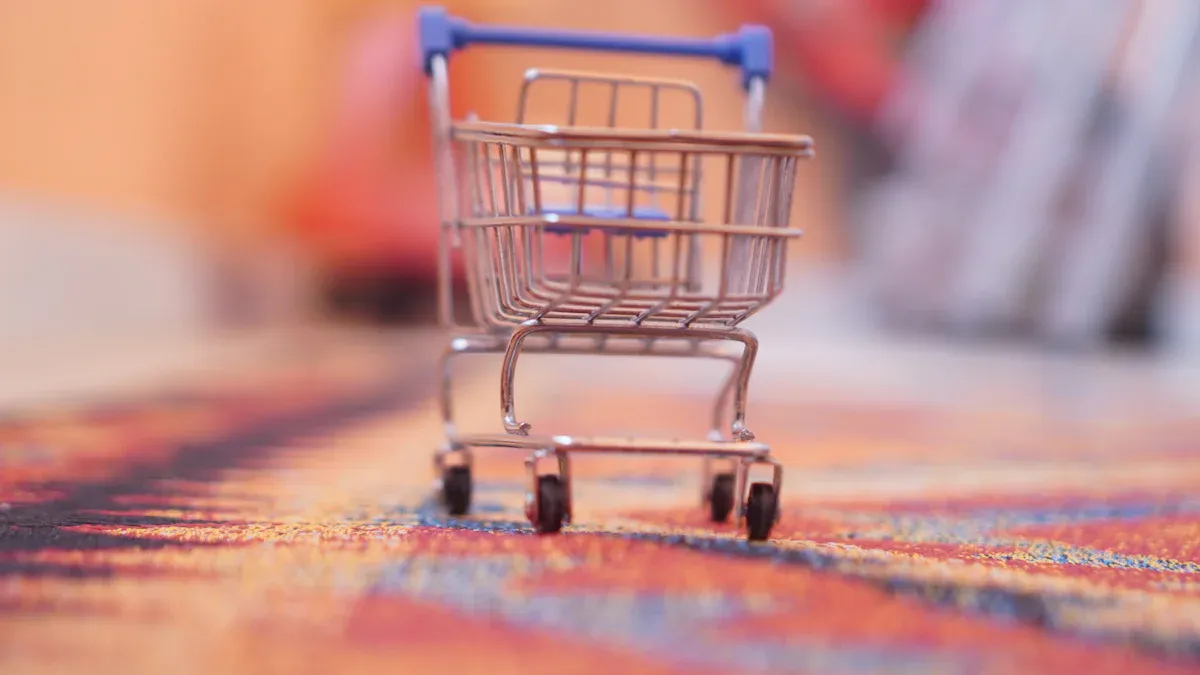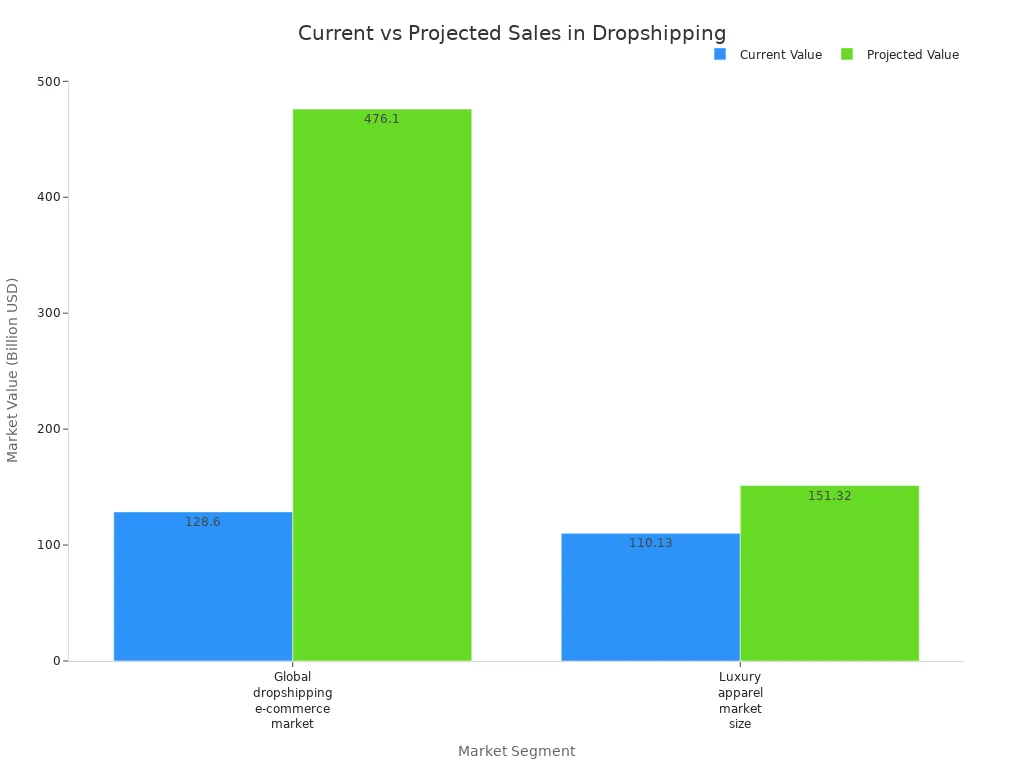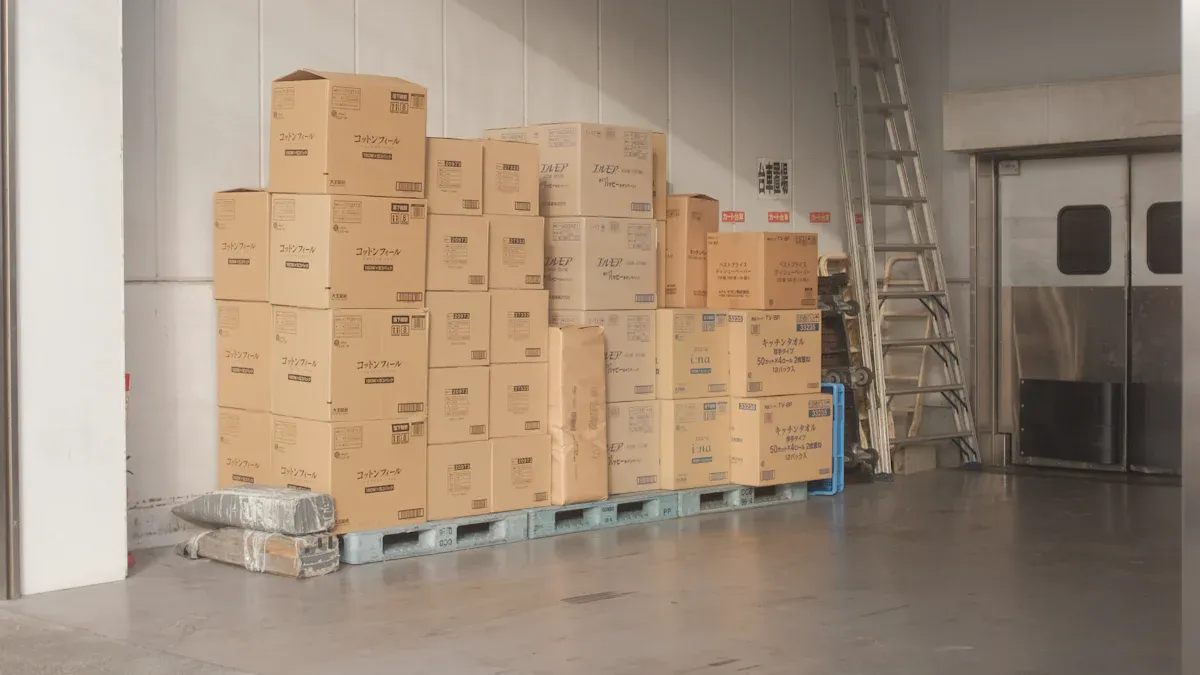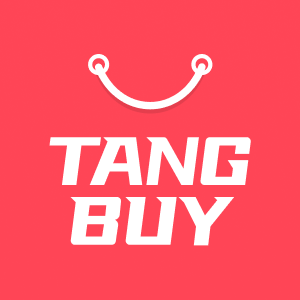Dropshipping Business Ideas to Help You Succeed in 2025

You have a great chance to start a strong business in 2025. The dropshipping market may be worth over USD 410 billion next year. Asia Pacific and North America are the top regions. Many business owners do well by picking the right niche. They keep things easy and listen to what customers say. If you choose Dropshipping Business Ideas that fit your interests and trends, you can begin with little money and grow.
Remember, if you keep trying and always get better, you have the best chance to win.
Key Takeaways
Pick dropshipping niches that you like and that many people want. Some good ideas are eco-friendly products, beauty, fashion, fitness, pets, electronics, baby care, home goods, and crafts.
Use trend research tools and social media to spot popular products early. Check if people really want these products before you spend money.
Choose suppliers you can trust. Test their product quality, delivery speed, and customer service. This helps keep your customers happy and keeps your brand safe.
Make a careful budget plan. Start small if you need to. Write down all your costs so you do not get surprised and can grow your business easily.
Build your online store with clear branding and easy navigation. Use honest product descriptions to help people trust you and want to buy.
Try smart pricing strategies. Test different prices to find what works best. This helps you make money and get more buyers.
Advertise your store using email, social media, retargeting ads, and influencer partnerships. This helps you find new customers and keep them coming back.
Give fast, friendly, and clear customer service. This helps people trust you, fixes problems quickly, and makes them want to buy again.

Dropshipping Business Ideas 2025

Eco-Friendly Products
Sustainability Trends
People care more about the planet each year. In 2025, eco-friendly products will be a top Dropshipping Business Idea. Many shoppers want to help the environment. They are willing to pay more for items with less plastic. Some products come from ethical factories or have green certifications. You can build trust by telling stories about your products. Show how your items help the earth. If you focus on sustainability, you will get loyal customers. These customers care about quality and doing the right thing.
Tip: Show off any eco-labels or certifications your products have. This helps people trust you and makes your shop look better.
Product Types
Eco-friendly dropshipping has many product types. You can sell reusable kitchen items like bamboo straws or compostable plates. Gardening kits and green office supplies are also good choices. Ethical clothing and eco pet accessories are popular too. These buyers want to make better choices for their pets and families. These products are useful and easy to ship. They appeal to many people. Dropshipping eco-friendly goods helps you avoid supply chain problems. Many suppliers now use sustainable practices.
Beauty and Skincare
Market Growth
Beauty and skincare are great Dropshipping Business Ideas for 2025. The beauty and personal care market will reach $673 billion in 2025. More people care about self-care and follow trends online. Social media helps beauty products become popular fast. This makes it easier to find new customers. If you choose this niche, you join a market that loves new things. People like to share their finds online.
Here’s a quick look at the numbers:
Metric | Value | Year/Period |
|---|---|---|
Beauty and personal care market revenue | $673 billion | 2025 |
Global dropshipping market value | $351.8 billion | 2024 |
Projected dropshipping market size | > $500 billion | 2026 |
Average annual growth rate (dropshipping) | 24.39% | 2020-2026 |
Popular Products
There are many beauty and skincare products for dropshipping. Skincare serums, moisturisers, and face masks are always wanted. Lip balms, sunscreens, and makeup brushes are light and easy to ship. People buy these items again and again. Social media trends help products like jade rollers and blackhead removers. Glitter lip gloss is also popular. To stand out, try eco-friendly packaging or special self-care tools. These products are good for young and older shoppers. They are a smart choice for your shop.
Clothing and Accessories
Fashion Niches
Fashion is the biggest dropshipping niche. The global apparel market is worth $1.7 trillion. Online fashion sales keep growing. More people buy clothes and accessories from home. Women’s clothing is very popular. You can also try minimalist jewellery, athleisure, or luxury apparel. Fashion trends change fast. You need to keep up and offer styles people see online.
Here’s a chart showing the growth in global dropshipping and luxury apparel markets:

Metric/Segment | Current Value / Year | Projected Value / Year | Additional Notes |
|---|---|---|---|
Global dropshipping market size | $365.7 billion (2024) | $464.4 billion (2025) | 22% growth rate |
Fashion (top niche by market size) | $802.33 billion | N/A | Largest dropshipping niche |
Profit margins in dropshipping | 15%-30% typical | N/A | Women’s clothing highly profitable |
Print-on-Demand
Print-on-demand (POD) is a flexible Dropshipping Business Idea. You can sell custom t-shirts, hoodies, or phone cases with special designs. The POD market is growing fast. It may grow by 26.1% each year until 2030. You do not need to keep stock or worry about unsold items. You only pay for products after you sell them. This keeps your risk low. POD lets you try new ideas quickly and follow trends. You can also target special interests like eco-friendly fashion or sports teams. This helps you stand out.
Note: POD works best if you focus on quality and unique designs. Work with good vendors who offer nice printing and sustainable options.
Fitness and Wellness
Home Fitness
More people now exercise at home. This is still popular in 2025. Home fitness gear is easy to find. People want to stay healthy without a gym. You can sell things like resistance bands and dumbbells. Kettlebells are also good to offer. These items are simple to ship and store. Many shoppers want smart home gym equipment. New tech like AI makes workouts more fun. Smart features help people enjoy exercise at home.
The pandemic changed how people work out. Now, home fitness is normal for many. People want gear that saves time and space. Compact equipment is very popular. Some items do more than one thing. Fitness services with subscriptions are growing. Wearable tech is also getting more buyers. You can sell products that link to apps or track progress.
Tip: Show how your products make home workouts easy and fun. Use videos and guides to help customers see the benefits.
Health Accessories
Wellness is not just about exercise. People want to feel good inside and outside. Health accessories are very popular now. Fitness trackers and smartwatches are in demand. Health monitors are also wanted by many. These gadgets give feedback in real time. They help users reach their goals. Nutritional supplements are also top sellers. Many people buy vitamins and herbal adaptogens. Other wellness products are also popular.
You can find good suppliers on AutoDS, Amazon, and AliExpress. Automation tools help you run your shop easily. They keep prices up to date. Working with influencers helps with marketing. Subscription models are also a good idea. If you focus on wellness, you can get loyal customers.
Key trends for 2025 in fitness and wellness:
Smart technology is used more
Equipment is compact and does many things
Fitness models mix online and subscriptions
Mental wellness features are important
Eco-friendly options are popular
Pet Products
Personalised Accessories
Pet owners love to treat their pets well. In 2025, personalised pet accessories are a top pick for Dropshipping Business Ideas. You can sell custom collars and name tags. Pet clothing is also a good choice. These products make pets feel special. Owners like to show off their style. Personalisation makes customers return to your shop.
Social media is great for showing these products. Videos and photos of pets wearing your items can go viral. Influencer marketing works well in the pet market.
Eco Pet Supplies
Eco-friendly pet products are getting more popular. Many owners want to help their pets and the planet. You can sell reusable pee pads and biodegradable waste bags. Natural grooming tools are also good to offer. These products are for buyers who care about sustainability.
The global pet industry is growing fast. More people are getting pets and spending more money. You can sell high-profit items like organic food and chew toys. Comfort products are also in demand. Tech-enabled feeders and health supplements are trending. Safety gear like GPS trackers and first aid kits are popular. Owners who travel or go outside want these items.
Note: Pick products with good profit and reliable suppliers. Fast shipping and quality are important to pet owners.
Electronics and Gadgets
Smartphone Accessories
Smartphone accessories are always wanted. In 2025, phone cases and screen protectors will still sell well. Chargers are also bestsellers. Custom designs and strong materials help your shop stand out. You can bundle a case with a screen protector. This helps you earn more per order.
Repair toolkits are a growing market. More people want to fix their own phones. You can sell mobile phone repair kits. Game controller accessories are also popular. These products are for tech fans and gamers.
Here’s a quick table of top smartphone accessories for dropshipping:
Accessory Type | Why It Sells | Tips for Success |
|---|---|---|
Phone Cases | Always wanted, customisable, high demand | Focus on new models and trends |
Screen Protectors | Easy to sell, protects devices | Bundle with cases |
Chargers | Needed, lightweight | Offer fast-charging options |
Repair Toolkits | DIY trend, more buyers | Use video ads for marketing |
Game Controller Sets | Gamers like them | Target gaming communities |
Home Security
Home security gadgets are a good choice for Dropshipping Business Ideas. People want to keep their homes safe with smart devices. You can sell wireless cameras and smart doorbells. Motion sensors are also easy to offer. These products are simple to install. They help people feel safe at home.
Smart home security is growing fast. More people use connected devices now. You can sell to homeowners, renters, and small business owners. Show features like remote monitoring and easy setup. Good support and clear instructions build trust.
Pro tip: Use product demos and customer reviews to show how your gadgets work. This helps shoppers feel sure about buying.
Baby and Maternity
Baby Care
If you want to help new parents, baby care is a smart choice for your dropshipping shop. Parents always want safe and simple products for their babies. In 2025, more smart baby monitors will have Wi-Fi and motion alerts. These monitors help parents feel calm when their baby sleeps. Nappy bags with organisers and changing mats are popular. You can sell baby carriers that are comfy and good for hips.
Parents like swaddle blankets made from organic fabrics. BPA-free bottles with anti-colic valves and temperature sensors are wanted. Digital health tools like Bluetooth thermometers are now common in nurseries. Organic cotton baby clothes, especially gender-neutral sets, sell well in bundles. Waterproof bibs, burp cloths, and non-slip bathtubs are safe and useful. You can also add teething toys made from medical-grade silicone or natural rubber.
Tip: Always check for safety certifications and use trusted suppliers. Parents want to know your products are safe for their children.
Maternity Essentials
Maternity products are another great area for Dropshipping Business Ideas. Expectant mothers want comfort and support. You can offer maternity pillows, belly bands, and nursing bras. Many mums want clothes made from soft, stretchy, and eco-friendly materials. Postpartum care kits are getting more popular. These kits often have soothing sprays, cooling pads, and recovery belts.
Digital health devices, like smart thermometers and wearable trackers, help mums watch their health. You can also sell handy things like portable breast pumps and hands-free pumping bras. Gender-neutral and organic maternity wear is trendy. If you focus on safety, comfort, and sustainability, you will get loyal customers.
Key trends in baby and maternity for 2025:
Smart nursery devices and digital health tools
Sustainable and organic materials
Multifunctional and ergonomic gear
Safety-focused designs
Postpartum and maternity care products
Home and Kitchen
Kitchen Gadgets
Home and kitchen products are always popular. People want to make life easier at home. The kitchen appliances market is growing each year. More buyers want smart and multi-use gadgets. Air fryers, food processors, and all-in-one cookers are top picks. These tools save space and time for busy families.
Smart kitchen devices, like Bluetooth meat thermometers and app-controlled scales, are trending. Many shoppers want to cook with precision and use technology in their kitchens. Eco-friendly tools, such as silicone food storage and beeswax wraps, are popular with people who care about the environment. Stylish kitchen accessories, like stainless steel straws and milk frothers, attract buyers who want both function and beauty.
Pasta machines are great for homemade cooking fans.
Ice cream makers are fun for families and easy to market.
Sous vide cookers help people make restaurant-quality meals at home.
Avocado slicers and egg bite makers are perfect for healthy eaters.
Microwave popcorn makers and advanced food storage systems are practical and lightweight for shipping.
Note: Pick products that are easy to use and look good. Good photos and videos help your shop stand out.
Home Decor
Home decor is a flexible niche with lots of room for creativity. People love to refresh their living spaces with new items. You can offer wall art, decorative cushions, and stylish storage solutions. Minimalist and bold abstract designs are both popular. Many buyers look for eco-friendly and handmade decor.
Customisable products, like family name signs or photo prints, make great gifts. Tapestries, framed posters, and wooden signs are easy to ship and fit many styles. If you keep up with interior design trends, you can always find new ideas to add to your shop.
Why home and kitchen dropshipping works:
Consistent demand all year round
Wide range of price points for different customers
High profit margins with the right products
Easy to target with social media and influencer marketing
Arts, Crafts, and Books
DIY Kits
Arts and crafts are booming in 2025. Many people want to try new hobbies or make things at home. DIY kits are a top pick for Dropshipping Business Ideas. You can sell craft kits for painting, knitting, or woodworking. These kits are great for beginners and experts. Subscription boxes with monthly projects keep customers coming back.
If you offer clear instructions and video tutorials, you help shoppers feel confident. Partnering with craft influencers can boost your sales. People love to share their finished projects online, which brings more attention to your shop.
Art Supplies
Art supplies are always in demand. You can offer paints, brushes, sketchbooks, and markers. Scrapbooking materials and sewing tools are also popular. Many buyers look for high-quality products and unique colours or designs. Wall art products, like canvas prints and metal signs, are growing fast. Customisable options, such as personalised prints or photo uploads, can increase your profits.
Tip: Stay updated with the latest craft and decor trends. Offer a mix of ready-made and custom products to reach more customers.
Promising sub-niches in arts and crafts:
Craft and DIY supplies for all skill levels
Wall art and customisable decor
Subscription boxes with monthly projects
Partnering with influencers and sharing tutorials
Validating Your Business Idea

Trend Research
You want to spot winning products before everyone else. Start by using AI-powered tools like Sell The Trend’s Nexus AI. These platforms help you find trending products with real sales data. Social media is your friend here. TikTok Creative Center and Pinterest show you what’s going viral right now. You can also check Facebook Ad Library to see which products get the most ads. This gives you clues about what’s hot.
Don’t forget about Google Trends. This tool shows you when people search for certain products and where interest is growing. If you see a steady rise, you might have found a winner. Combine this with keyword research tools like Semrush or Ahrefs. These tools give you exact search numbers and show how tough the competition is. You can also look at eBay Seller Hub or AliExpress Dropshipping Center for real sales figures. This helps you avoid guessing and make smart choices.
Tip: Use a mix of these tools. You’ll spot trends early and get ahead of your competitors.
Market Demand
Now, you need to check if people really want your product. Start with keyword research. Google Keyword Planner, Semrush, and Ubersuggest show you how many people search for your product each month. High search numbers mean strong demand. Next, look at Amazon Best Sellers and AliExpress. These platforms show you what’s selling right now.
Social media is another great place to check demand. Look at Instagram, Facebook, and Pinterest. If you see lots of posts, likes, and shares about a product, that’s a good sign. You can also read customer reviews to find out what buyers like or dislike. This helps you spot gaps in the market.
Try running a small ad campaign or set up a simple landing page. See if people click or buy. This real-world test gives you proof before you invest more money.
Quick checklist for market demand:
High search volume on keyword tools
Strong sales on Amazon or AliExpress
Active social media buzz
Positive customer reviews
Good results from small tests
Competition Analysis
You want to know who you’re up against. Start by searching for your product on Google, Amazon, and Shopify. Look at the top shops. What do they sell? How do they price their products? Check their websites and social media pages. See how many followers they have and how often they post.
Use tools like SEMrush, Ahrefs, and SimilarWeb. These show you how much traffic your competitors get and which keywords they target. You can also use Google Alerts to track when they launch new products or run promotions.
A simple SWOT analysis helps you see where you can win. List your competitors’ strengths and weaknesses. Maybe they have slow shipping or poor customer service. You can do better. Keep an eye on their ads using Facebook Ads Manager or Google Ads dashboards. Track metrics like Return on Ad Spend (ROAS) and Customer Acquisition Cost (CAC). These numbers show how well their ads work.
Note: Regularly check your competitors. The dropshipping market changes fast. Stay alert and you’ll always find new chances to stand out.
Supplier Selection
Picking the right supplier is very important for your dropshipping business. The right supplier sends orders on time and has good products. This helps you keep your customers happy. Here is what you should check before choosing a supplier in 2025.
What to Look For in a Supplier
Your supplier should meet your needs. Here are some things to look for:
Products should be good quality and popular.
Fast delivery keeps your customers pleased.
Low order fees help you make more money.
Good technology lets you track orders and stock.
Customer service should answer quickly if there is a problem.
Suppliers with good reviews are more trustworthy.
It should be easy to connect their system to your shop.
Tip: Always read what other shop owners say. If many people complain about late orders or bad products, pick a different supplier.
How to Find and Test Suppliers
You do not need to choose the first supplier you see. Take your time and follow these steps:
Search for suppliers online. Use Google and type “wholesale” or “dropshipping supplier” with your product.
Talk to suppliers. Ask about their products, shipping, and support.
Check if they have order tools and live stock updates.
Order a sample. Test the product, delivery, and packaging yourself.
Try buying from a competitor’s supplier. This shows what your customers will get.
Ask makers for lists of trusted wholesalers.
Go to trade shows if you can. Meeting suppliers in person builds trust.
Make a shortlist. Pick suppliers who fit your needs and have a good record.
What to Avoid
Some suppliers seem good but cause problems later. Watch out for these signs:
Monthly fees just to use their service.
High order charges that lower your profit.
Minimum orders that do not work for dropshipping.
Suppliers who sell “wholesale” to everyone.
Quick Comparison Table
Criteria | Why It Matters | What to Check |
|---|---|---|
Product Quality | Fewer returns, builds your brand | Order samples, read reviews |
Delivery Speed | Makes customers happy | Ask about shipping times |
Customer Service | Fixes problems fast | Test how fast they reply |
Technology Integration | Makes your job easier | Look for dashboards, APIs |
Reliability | Keeps your reputation safe | Check reviews, ask for proof |
Remember: A good supplier helps your business grow. Take your time, ask questions, and always test before you decide. Your future self will be glad you did!
Choosing Dropshipping Business Ideas

Niche Selection
Picking the right niche is the first step to dropshipping success. You want a niche that matches your interests and has real demand. Start by thinking about who your customers are. What do they like? What problems do they want to solve? You can find answers by reading forums, checking social media, and looking at product reviews.
Here’s a simple process to help you choose:
Define your target audience. Know their needs and what makes them buy.
Research the market. Look for niches with high demand but not too much competition.
Use tools like SEMrush or Ahrefs to spot untapped markets and keywords.
Order product samples. Check the quality yourself before selling.
Avoid risky categories like electronics or health products if you’re just starting.
Offer something special, such as customisation or faster shipping.
Build a community around your brand. Engage with your audience on social media.
Tip: Focus on products that are hard to find elsewhere or solve a unique problem. This helps you stand out and keeps customers coming back.
Profit Margins
You want your business to make money, so profit margins matter. Most dropshipping shops aim for a margin between 15% and 20%. Some sellers reach up to 30%, while beginners should try for at least 10%. Your margin depends on your niche, product costs, and how you price your items.
Here’s a quick table to help you understand:
Margin Range | Who Should Aim For It? | Notes |
|---|---|---|
10% | Beginners | Safer, but less profit |
15-20% | Most dropshippers | Good balance of sales and earnings |
20-30%+ | Experienced sellers | Requires strong brand and sourcing |
To boost your margins, look for suppliers with better prices, offer bundles, or add value with guides and support. Always check your costs and adjust your prices if needed.
Testing Products
Testing new products is key before you go all in. You don’t want to waste money on items that won’t sell. Start by adding a few products to your shop and running small ads. Watch how customers react. If you see good sales, you can spend more on marketing.
Follow these steps to test products:
Check supplier ratings and reviews. Pick reliable partners.
Order samples with fast shipping. Make sure the quality is good.
Try A/B testing with different photos and titles.
Use social media ads to see which products get attention.
Ask early customers for feedback. Offer free samples if needed.
Track your ad spend and sales. Look at metrics like ROAS and CAC.
Increase your orders and ads slowly if the product does well.
Remember: Testing helps you avoid big mistakes. It lets you find winners and grow your shop with less risk.
Budget Planning
Getting your budget right is one of the most important steps when you start a dropshipping business. You do not need a huge amount of money, but you do need to plan carefully. If you know where your money goes, you can avoid surprises and keep your business running smoothly.
Let’s look at the typical costs you might face when launching your store in 2025. Here’s a handy table to break it down:
Cost Component | Description | Typical Cost Range |
|---|---|---|
Business Startup Costs | Legal formation, registration fees | $132 to $340 (varies by region) |
Ecommerce Platform (Shopify) | Monthly subscription plans | $29 to $439 per month |
Domain Name | Annual domain registration | $8 to $20 per year |
Store Setup | Store creation, themes, apps | $0 to $440 (one-time) |
Product Research | Tools and subscriptions | $0 to $39 per month |
Advertising | Marketing and ads | $0 to $4,000 per month |
Supplier Fees | Dropshipping supplier subscriptions | $0 to $40 per month |
Payment Processor Fees | Transaction fees (e.g., PayPal, Stripe) | Variable, usually % + fixed fee |
You can see that some costs are one-off, like your business registration and domain name. Others, such as your ecommerce platform and advertising, are ongoing each month. Most new dropshippers spend between $150 and $700 to get started. After that, you might spend $150 to $4,300 each month, depending on how much you want to grow.
How much should you set aside? Here are four common budget plans:
£400–£500 Budget: Use a free Shopify theme. Spend £80–£160 on ads. Save the rest for your first orders and basic tools. You will do most things yourself. This plan is risky but possible if you learn fast.
£800–£1,000 Budget: You can buy a paid theme or get some design help. Test more products and spend a bit more on ads. You have more room to try new things, but you still need to watch your spending.
£2,500–£3,000 Budget: You can test several products at once. You can pay for better apps and cover early problems, like ad account issues. Growth is faster and less stressful.
£8,000–£10,000 Budget: You get a strong launch. You can run many ad tests, cover chargebacks, and handle delays. You can set up your business legally and have more freedom to make changes.
Tip: Start with what you can afford. Track every expense. Use a simple spreadsheet or free app to keep an eye on your cash flow.
You do not need to spend a fortune to succeed. Many dropshippers start small and grow as they learn. If you plan your budget well, you can avoid common mistakes and build a business that lasts. Always leave a little extra for unexpected costs. This way, you stay in control and ready for anything.
Launching Your Store

Store Setup
Getting your dropshipping store ready is exciting. You want to make a great first impression and keep things simple. Here’s a step-by-step guide to help you set up your store the right way:
Pick your business niche. Choose products and a target market that match your interests.
Find reliable suppliers. Look for quality products and good service.
Set up your online shop. Use a trusted platform like Shopify or WooCommerce.
Create your brand identity. Choose a catchy name, design a logo, and pick your colours.
Sort out your finances. Open a business bank account and learn about taxes.
Register your business. Make sure you have the right licences.
Plan your marketing. Think about SEO, paid ads, and social media.
Tip: Test your store before you launch. Place a test order to check the process from start to finish.
A well-set-up store builds trust and makes shopping easy for your customers. Keep your design clean and your navigation simple. Add clear product photos and honest descriptions. Make sure your checkout process is smooth and secure.
Pricing Strategy
You want prices that attract buyers and keep your business profitable. Start by adding up all your costs—supplier fees, shipping, and any extras. Then, choose a pricing method that fits your goals. Here’s a quick look at some popular strategies:
Pricing Strategy | What It Means | Why Use It? |
|---|---|---|
Cost-Plus Pricing | Add a set amount to your product cost | Easy to use, keeps profits steady |
Value-Based Pricing | Set prices based on what customers think it’s worth | Can boost profits if your product stands out |
Dynamic Pricing | Change prices based on demand and competition | Stays competitive, uses automation |
Tiered Markup | Use higher markups on cheaper items | Balances profit and sales |
Psychological Pricing | Use prices like £9.99 to seem cheaper | Encourages more sales |
Bundling | Sell products together at a discount | Increases order size and value |
Fulfilment Pricing | Include shipping and handling in your price | Builds trust, covers your costs |
Try different prices and see what works best. Use A/B testing to compare results. Watch your competitors and adjust your prices if needed. Automation tools can help you change prices quickly when the market shifts.
Note: Always check your profit margins. Don’t race to the bottom—focus on value and service.
Marketing
Now it’s time to get the word out. You want people to find your store and come back for more. Some marketing channels work better than others for dropshipping.
Email and SMS marketing give you the best return on investment. They let you send personal messages and special offers straight to your customers.
Retargeting ads on Facebook, Google, and other platforms help you win back visitors who didn’t buy the first time.
Social media platforms like Instagram, TikTok, and YouTube boost your brand and help you reach new audiences.
Paid ads can work well if you test small groups and target the right people. Try less crowded platforms like Reddit for lower costs.
Tip: Build your email list from day one. Offer a discount or freebie to get people to sign up.
Mix these channels to get the best results. Keep your messages friendly and helpful. Share stories, tips, and reviews to build trust. Marketing is not just about selling—it’s about building a community around your brand.
Customer Service
Good customer service helps your dropshipping shop stand out. You want buyers to feel cared for and supported. When you treat customers well, they return and tell friends. Most people will pay more for better service. This means good service helps you earn extra money.
Dropshipping has some special problems. Shipping can be slow or change suddenly. Sometimes, product quality is not the same. Stock can run out without warning. You must fix these problems quickly and be honest. This builds trust and keeps customers happy.
Here are some ways to give great customer service:
Give customers many ways to contact you. Use live chat, email, and social media. People want the same help no matter how they reach you.
Reply quickly. Shoppers want answers fast. Quick replies make people feel important and stop complaints.
Use chatbots or helpdesk tools. These answer questions when you are not online.
Make your messages personal. Use the customer’s name and remember what they bought before. This makes them feel special and want to shop again.
Be clear about your products, prices, and delivery times. If there is a delay or problem, tell your customer right away.
Listen to feedback and fix problems fast. Saying sorry and solving the issue can turn an unhappy shopper into a loyal fan.
Start a loyalty programme. Give rewards like discounts, free shipping, or small gifts. This makes people want to buy again and feel closer to your brand.
Tip: Happy customers often share their good experiences. Most people will tell friends about a shop that treats them well. This helps your business grow without spending more on ads.
Customer service is very important in dropshipping. If you keep buyers happy, you spend less to find new ones. Even a small rise in customer loyalty can boost your profits. Bad service makes people leave. Nearly all shoppers will stop buying after a bad experience.
Here’s a quick table to help you remember the key points:
Customer Service Tip | Why It Matters |
|---|---|
Fast replies | Builds trust and reduces complaints |
Multiple contact options | Meets customer expectations |
Personalised support | Increases loyalty and repeat sales |
Clear information | Prevents confusion and frustration |
Loyalty rewards | Encourages repeat business |
If you focus on good service, you will stand out. Your customers will notice and your business will do better.
Growth Strategies

Scaling Up
You have launched your dropshipping store and made your first sales. Now, you want to grow. Scaling up means you increase your sales and profits without making things too complicated. Start by looking at what works best in your shop. Find your top-selling products and spend more on ads for those items. You can also add new products that match your bestsellers.
Try these steps to scale up:
Use automation tools to handle orders and customer messages. This saves you time.
Test new marketing channels. If you use Facebook ads, try Google or TikTok as well.
Increase your ad budget slowly. Watch your results and stop spending on ads that do not work.
Work with influencers who can show your products to more people.
Tip: Keep your customer service strong as you grow. Happy customers will come back and tell their friends.
Local Fulfilment
Fast delivery makes customers happy. Local fulfilment helps you send orders quicker. You can work with suppliers who have warehouses in your country. This means your products reach buyers in just a few days.
Here’s why local fulfilment helps your business:
Benefit | How It Helps You |
|---|---|
Faster shipping | Customers get orders quickly |
Lower shipping costs | You save money on delivery |
Fewer returns | Less chance of lost or late items |
Better reviews | Happy customers leave good feedback |
To start, ask your suppliers if they have local warehouses. You can also use fulfilment centres like ShipBob or local 3PLs. If you sell in the UK, look for UK-based suppliers. This gives you an edge over shops that ship from far away.
Brand Building
You want people to remember your shop. Brand building helps you stand out from other dropshippers. Start with a unique logo and a clear message. Tell your story on your website and social media. Show what makes your shop special.
Here are some ways to build your brand:
Use the same colours and style everywhere.
Share customer reviews and photos.
Offer great service and reply to messages quickly.
Send thank-you notes or small gifts with orders.
Create helpful content, like how-to guides or tips.
Note: A strong brand builds trust. People will choose your shop over others if they feel a connection.
Brand building takes time, but it pays off. You will get loyal customers who come back again and again. Your shop will grow faster and feel more like a real business.
Choosing the right Dropshipping Business Ideas for 2025 gives you a real chance to build something great. You need to check your ideas, do your research, and listen to your customers. Stay flexible and keep learning as you go. If you take action now, you can turn your shop into a success. Ready to start your dropshipping journey? The best time is today!
FAQ
What is dropshipping?
Dropshipping means you sell products online without keeping stock. When someone buys from your shop, you order from a supplier. The supplier ships the product straight to your customer.
How much money do I need to start dropshipping?
You can start with as little as £400. Most people spend between £400 and £1,000. You pay for your shop, ads, and a few tools. Start small and grow as you learn.
Do I need to register a business for dropshipping?
Yes, you should register your business. This keeps things legal and helps with taxes. You can start as a sole trader or set up a limited company.
How do I find good products to sell?
Look for trending products using tools like Google Trends or TikTok. Check what sells well on Amazon and AliExpress. Test a few products before you add more to your shop.
Can I run a dropshipping business from home?
Absolutely! You only need a laptop and internet. You can work from your bedroom, kitchen, or even a café. Many dropshippers work from home every day.
How do I handle returns and refunds?
You contact your supplier when a customer wants a return. Each supplier has their own rules. Always explain your return policy clearly on your website.
Is dropshipping still profitable in 2025?
Yes, dropshipping can still make you money in 2025. You need to pick the right products, offer good service, and keep learning. Many people succeed by following trends and listening to customers.
Tip: Always check reviews before choosing a supplier. Good suppliers help you avoid problems and keep your customers happy.

TangBuy: A Smarter Way to Dropship in 2025
If you're looking to stay competitive with dropshipping in 2025, speed and trend-awareness are key. TangBuy helps you stay ahead with real-time product trends, fast fulfilment, and factory-direct sourcing. With over 1 million ready-to-ship items, 24-hour order processing, and seamless Shopify integration, TangBuy makes it easier to test, scale, and succeed in today's fast-moving eCommerce landscape.
See Also
Profitable Dropshipping Concepts To Explore In 2025
Best Dropshipping Markets To Target For 2025 Success
Complete Guide To Starting A Dropshipping Venture In 2025

